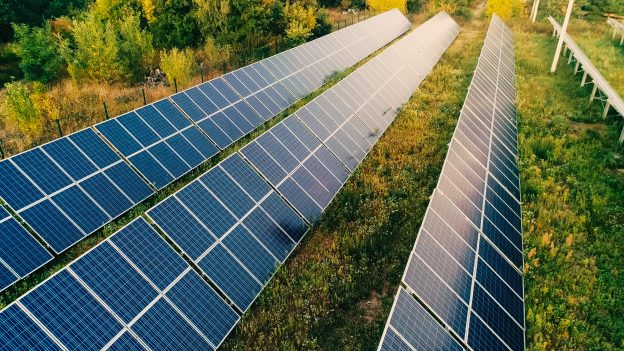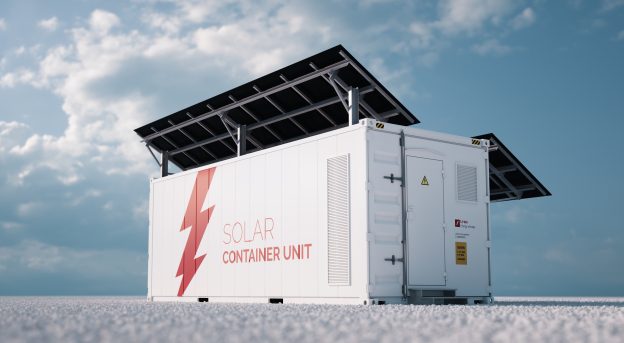In the first quarter of 2024, the photovoltaic equipment industry presented even more dismal data: 37 companies experienced negative growth in operating revenue, and 45 companies saw negative growth in net profit attributable to the parent company. As many as 20 companies suffered a year-on-year decline of 100% in net profit attributable to the parent company. Even leading enterprises such as Tongwei Shares and LONGi Green Energy were not spared.
In the top ten of revenue rankings, LONGi Green Energy achieved an operating revenue of 17.674 billion yuan in the first quarter of this year, a year-on-year decrease of 37.59%; the net profit attributable to the parent company suffered a loss of 2.35 billion yuan, a year-on-year decrease of 164.61%. Tongwei Shares achieved an operating revenue of 19.57 billion yuan, a year-on-year decrease of 41.13%, with a net profit loss of 787 million yuan, compared to a net profit attributable to the parent company of 8.601 billion yuan for the same period last year. In addition, TCL Zhonghu and JA Solar also fell into the quagmire of losses. Under the gloomy performance, the stock prices of photovoltaic companies continued to fall. From April 30, 2023, to April 30, 2024, the stock price of TCL Zhonghu fell by nearly 70%, the stock price of JA Solar fell by 64.79%, the stock price of LONGi Green Energy fell by 47.2%, and the stock prices of listed companies such as Tongwei Shares and Daqo New Energy fell by more than 40%. Despite this, the giants have set new highs in shipment volumes. In the top ten global photovoltaic module shipments for 2023, Jinko Energy returned to the top spot, along with LONGi Green Energy, Trina Solar, and JA Solar ranking in the top four. For 2024, Jinko Energy is expected to ship 10-11 GW, Trina Solar and JA Solar are expected to ship 8-9 GW and 8.5-9.5 GW respectively, and LONGi Green Energy is expected to ship 9-10 GW.
Has the Industry Reached the Bottom of the Cycle?
Regarding the reasons for the decline in performance since 2023, most companies have stated in their financial reports that they have been affected by two main factors: the decline in the price of the industrial chain and the impairment loss of assets. "Statistics from the China Photovoltaic Industry Association show that in 2023, China's production of polysilicon, silicon wafers, cells, and modules reached 1.43 million tons, 622GW, 545GW, and 499GW, respectively, with year-on-year increases of 66.9%, 67.5%, 64.9%, and 69.3%. However, it is understood that the supply and demand ratio of the industry chain has shifted from 1.02:1 in June 2023 to 2:1 by the end of the year. Under the pressure of supply and demand imbalance, prices across the entire photovoltaic industry chain continued to fall. By the end of 2023, the average selling prices of high-purity crystalline silicon, silicon wafers, cells, and modules had decreased by 80%, 58%, 60%, and 45% compared to the beginning of 2023, respectively. Especially since the fourth quarter of last year, the prices of silicon wafers, cells, and modules have hit historical lows, with module prices even breaking through the 1 yuan per watt mark.
"Tongwei Shares stated in its annual report for 2023 that the increase in the scale of product sales was not enough to offset the impact of the significant decline in the prices of the photovoltaic industry chain. LONGi Green Energy also stated that due to the significant drop in polysilicon prices, the investment income recognized by the company's stake in polysilicon enterprises was 1.03 billion yuan, a significant year-on-year decrease of 10.82 billion yuan. Listed companies such as TCL Zhonghu and Daqo New Energy also mentioned that it is difficult to escape the impact of the rapid decline in the industry chain's prices on performance.
At the same time, the pace of the industry's transition from P-type to N-type technology has caught the industry off guard. According to institutional estimates, the market share of P-type and N-type in 2023 will be 70% and 27%, respectively, but in 2024, the market share of N-type technology will reach 79%, while the market share of P-type will plummet to 20%.
The once dominant P-type capacity has depreciated rapidly, and photovoltaic companies have had to provide for impairment on assets mainly related to P-type capacity. Financial reports show that in 2023, Tongwei Shares provided for asset impairment of up to 6.236 billion yuan, including 1.305 billion yuan for inventory impairment and 4.391 billion yuan for fixed asset impairment; LONGi Green Energy provided for asset impairment of 7.025 billion yuan, including 5.170 billion yuan for inventory depreciation loss and contract fulfillment cost impairment, and 1.586 billion yuan for fixed asset impairment; TCL Zhonghu provided for inventory impairment loss of 1.993 billion yuan, with inventory reaching 8.164 billion yuan, an increase of 1.74 billion yuan from the same period last year. Facing the rapid iteration of capacity, photovoltaic companies are taking remedial action. Yan Ke, the Secretary of the Board of Directors of Tongwei Shares, stated at the latest performance briefing that by the end of 2023, the company has essentially dealt with the book value of PERC capacity, facilitating a lighter load for subsequent operations. The company expects that the proportion of TopCon will be around 80% for the entire year.
Cross-border entrants are fleeing in droves
As the photovoltaic (PV) industry's lucrative days are over, the sector has been hit with frequent news of layoffs and production halts. In March, after being exposed to a reduction of nearly one-third of its workforce, LONGi Green Energy responded to the media, stating that the photovoltaic industry is facing a complex internal and external competitive environment. To cope with market changes and enhance organizational efficiency, the company has carried out optimization of relevant post structures, with an expected personnel adjustment ratio of about 5% of the total number of employees. In the face of the industry's winter, those who once rushed to the industry due to the allure of "light" are now unable to withstand the pressure, either falling into a loss-making situation or choosing to terminate related investments. On April 24, Zhonglai Shares, which mainly operates photovoltaic auxiliary materials, announced that due to significant changes in the photovoltaic industry's market environment and a major change in the feasibility of the silicon-based project, the company has decided to terminate the investment in the silicon-based project that was officially announced two years ago.
On March 19, Lingda Shares announced its intention to terminate the investment in the construction of the Tongling 20GW high-efficiency photovoltaic cell industry base project. On April 16, Lingda Shares announced again that the main production equipment of Jinzhai Jiayue will continue to be suspended, with an expected suspension period until May 15.
It is understood that Lingda Shares entered the photovoltaic solar cell track in 2020 and is currently "capped" due to three consecutive years of negative net profit excluding non-recurring gains and losses, with the stock name also changed to ST Lingda. Financial reports show that Lingda Shares achieved a business income of 839 million yuan last year, a year-on-year decrease of 47.49%; the net profit attributable to shareholders of the listed company was a loss of 262 million yuan, a year-on-year decrease of 1447.69%. Regarding the significant decline in performance, the company explained that it was mainly due to the continuous decline in the market price of high-efficiency solar cells during the reporting period and the increase in the proportion of processing business confirmed by the net amount method.
On March 18, Haiyuan Composites, which mainly operates composite material lightweight products, also announced that in view of the significant changes in the photovoltaic industry and market environment during the project advancement process, the company decided to terminate the Chuzhou project in order to reduce investment risks and management costs, and to optimize resource allocation. The company transferred 100% of the equity of the project company to the veteran photovoltaic enterprise Aixu Shares at a price of 38 million yuan.
Rising Uncertainty in Overseas Markets
At the same time as the intensification of competition within the industry, there are also signs of a decline in domestic installation demand. Data from the National Energy Administration shows that in the first quarter of 2024, the growth of new photovoltaic (PV) installations in China has slowed significantly, with a total of 45.74GW of new PV installations added nationwide, a year-on-year increase of 36%. In just the month of March this year, 9.02GW of new PV installations were added nationwide, a 32% decrease from the same period last year.
According to forecasts by the China Photovoltaic Industry Association, the global new photovoltaic installation capacity in 2024 is expected to be between 39GW and 43GW, with an optimistic scenario of a year-on-year increase of 10%. In addition to the highly saturated domestic market, the overseas market is also a battleground for photovoltaic companies. Public information shows that Chinese photovoltaic companies are continuously expanding their overseas local production capacity, with investment areas expanding from Southeast Asia to the United States, the Middle East, and other countries and regions. The methods of investment are no longer limited to listing financing and product exportation, but also include various approaches such as establishing overseas production bases, participating in joint ventures with foreign companies, forming consortiums, direct investment, and mergers and acquisitions. This is accompanied by more uncertainty. Data from the China Customs import and export statistics show that from January to February of this year, the three main photovoltaic materials—silicon wafers, cells, and modules—showed a trend of "increasing volume and decreasing price." The total export value was $6.33 billion (silicon wafer data is calculated according to "monocrystalline silicon slices with a diameter > 15.24cm"), a 27.2% decrease from the same period in 2023; the export weight was 2.13 billion kg, a 40.1% year-on-year increase.
Additionally, several photovoltaic companies have mentioned in their financial reports that the current overseas trade situation is becoming increasingly severe. TCL Zhonghuan stated that its stake in Maxeon had a negative impact of 1.69 billion yuan on the company's performance in 2023. It is understood that Maxeon is an important strategic layout for the international business development of TCL Zhonghuan, with its main market being Europe and the United States, and the significant decline in Maxeon's performance and stock price was precisely affected by external factors such as new regulations for distributed photovoltaics in California and the persistently high interest rates in the United States. LONGi Green Energy also stated that for a long time, some countries have introduced trade protection measures and tariff barriers against Chinese photovoltaic companies to support the development of their own photovoltaic industries. The complex and variable overseas trade policies will bring greater uncertainty risks to the company's photovoltaic product exports and the operation of overseas production capacity. To avoid the risks of trade barriers, Shen Wenzhong stated that building factories in the United States has become the primary choice for leading companies. However, considering the amount of capital investment, time costs, and the lack of industrial chains, companies are still cautious in implementation. After all, for new battery and module factories, it is still difficult to completely get rid of dependence on the Chinese supply chain in the short term, and the time for production capacity to be put into place is difficult to guarantee due to local costs, approval processes, and policies.
Shen Wenzhong believes that photovoltaic companies that want to "go global" also need to be vigilant about patent risks. Public information shows that Chinese photovoltaic companies have encountered multiple patent lawsuits and "337 intellectual property investigations" in the fields of quasi-monocrystalline and PERC cells, causing significant financial and energy losses to the companies. Especially in the field of battery technology, whether it is the once mainstream PERC cells or the rapidly industrializing TOPCon and BC high-efficiency cells, their original inventors all come from overseas, and there are still intellectual property dispute risks in the overseas layout of Chinese photovoltaic companies."







